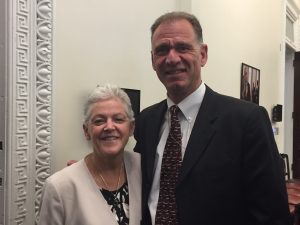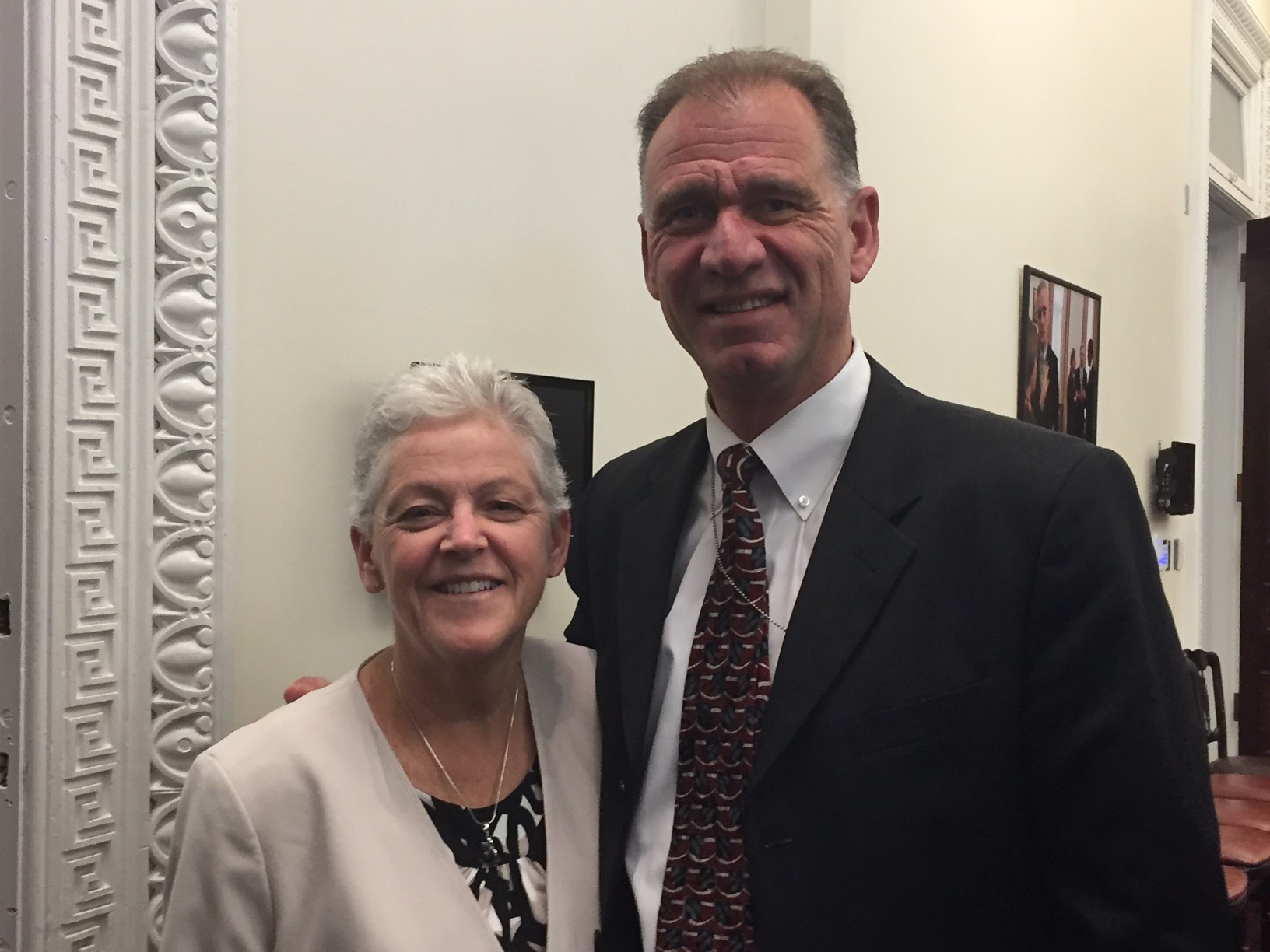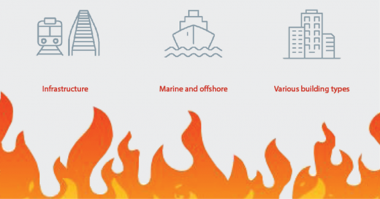Danfoss North America President provided an update on its ongoing commitment to convening a Codes and Standards Task Force and announced new investment in a US testing facility to help industry transition to low-GWP refrigerants
Danfoss, a leading global manufacturer of high-efficiency electronic and mechanical components and controls for air-conditioning, heating, refrigeration, industrial and water systems, this week participated in an industry leader roundtable hosted by the White House to reduce greenhouse gas emissions from hydrofluorocarbons (HFCs).
Held on October 15 at the Eisenhower Executive Office Building, the event convened leading executives from refrigeration and air-conditioning equipment and component manufacturers, refrigerant producers and industry associations in a roundtable briefing of senior White House officials, including Department of Energy Secretary Ernest Moniz and Environmental Protection Agency Administrator Gina McCarthy. The event was moderated by Assistant to the President and Senior Advisor Brian Deese, who oversees climate, conservation and energy policy.
The Administration’s Climate Action Plan seeks to leverage new opportunities to reduce HFCs. US industry is leading the way in helping fulfill that pledge by investing millions of dollars to develop and deploy the next generation of safer HFC alternatives, and by incorporating climate-friendly technologies into the cars, air conditioners, refrigerators, foams and other products they manufacture and use.
Danfoss Commitment to Advancing Low-GWP Refrigerants

Gina McCarthy, Environmental Protection Agency Administrator (left); John Galyen, president, Danfoss North America (right)
During the event, John Galyen, president, Danfoss North America, provided an update on the Codes and Standards Task Force that the company announced it would convene and facilitate during a similar industry roundtable at the White House in September 2014.
Last year, Danfoss committed to convene a Codes and Standards Task Force to address a major barrier in broad adoption of mildly flammable, low-GWP refrigerants. “State and local fire and building codes are major barriers to the broad deployment and adoption of low-GWP refrigerants in the United States,” explained Galyen. “These codes often prohibit the use of flammable or even mildly flammable refrigerants, even in very small amounts less than a typical aerosol spray can. Since they are developed and mandated locally – across hundreds or thousands of jurisdictions, codes are difficult to change and create an effective obstacle to manufacturers offering products with low-GWP refrigerants that may be flammable or mildly flammable.”
The Task Force, which comprises a broad and diverse stakeholder group of experts from industry, environmental advocacy groups, EPA, UL, codes officials, fire marshals and other stakeholders with a vested interest, is focused on accelerating the implementation of fire and building codes for mildly flammable, low-GWP refrigerants.
“The Task Force has already taken several steps,” Galyen explained. “We have launched a communications plan to educate industry on the need for revised standards and codes. We have worked with ASHRAE to keep its development of standards on track and have been active at the meetings of its refrigerant safety Standard 15 committee. We have actively engaged the model code groups to gain support in preparing codes, once the Standard is ready. And, we have established a sub-committee to work with states and municipalities. Acting together, the group has authored several articles and secured speaking engagements with influential audiences vital to support this transition.”
Galyen continued, “Future progress is highly dependent on ASHRAE Standard 15, which is delayed because additional testing and analytical work is needed. Some of that work is being done, but some still needs funding. Without the needed research, we risk missing the 3-year code cycle which can protract and complicate the conversion to low-GWP alternatives. Administration support at that critical moment could be decisive.”
“We ask for the Administration’s support in encouraging local and state governments in the timely adoption of the standards once completed,” he continued. “During the next 12 months, the Task Force will continue collaboration with ASHRAE, the model code groups, firefighter associations, state code groups and state and city governance associations. As the ASHRAE Standard 15 nears publication, the Task Force will help prepare, coordinate and submit code proposals.”
To further its commitment to the adoption of low-GWP refrigerants, Danfoss also announced a multi-million dollar investment in a new Application and Development Testing Center in the United States to increase the amount of available laboratory capacity to help air-conditioning and refrigeration equipment manufacturers prepare to meet both energy efficiency and refrigerant regulations.
Galyen said, “The Center will enable our customers to test their equipment for safety and performance compliance using the new low-GWP refrigerants, including those that are deemed mildly flammable.” Danfoss expects to break ground on the new Application and Development Center in late 2015.
To learn more about Danfoss and its broad range of technologies for use with low-GWP refrigerants, including ammonia, CO2, HFC-32, hydrofluoroolefins (HFOs) and hydrocarbons, please visit www.danfoss.us.





[…] please visit http://www.danfoss.us. This article was also published on the Empowering Pumps blog.// // 981 && menu.is(':hidden')) { menu.removeAttr('style'); } }); }); // ]]><img […]
[…] please visit http://www.danfoss.us. This article was also published on the Empowering Pumps blog.<img […]